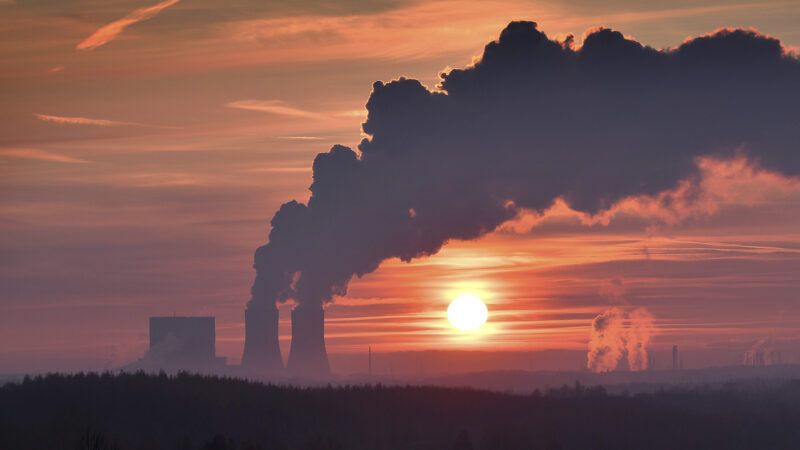EPA's New Power Plant Rules Would Be Hard To Implement, Possibly Unconstitutional
The Supreme Court ruled in 2022 that the agency lacked the authority to regulate the entire energy industry at once, but the Biden administration is taking another swing at it anyway.

On Thursday, the Environmental Protection Agency (EPA) proposed new rules that would require coal- and gas-fired power plants to achieve significant decreases in carbon emissions within the next two decades. According to Politico, plants would be required to lower their carbon output by "90 percent between 2035 and 2040—or shut down."
Citing authorities granted under the Clean Air Act, the agency said in a statement that "the proposed limits and guidelines would require ambitious reductions in carbon pollution based on proven and cost-effective control technologies that can be applied directly to power plants." Key among those technologies are "carbon capture and storage (CCS) and clean hydrogen."
CCS uses class VI wells to trap carbon dioxide and inject it into underground rock formations. But as Reason noted last month, the EPA is currently sitting on dozens of "pending" applications to build class VI wells. A report this month from lobbying firm Akin noted that "EPA review of Class VI well applications is a multi-year time consuming process and is a key source of delay for CCS projects."
The Akin report details that the EPA has only issued six class VI permits since 2010; of those, only two led to the actual construction of a well, and each took around six years to be issued. U.S. law does allow the EPA to delegate primary enforcement responsibility, or "primacy," to states that would allow them to authorize underground injection wells. But that also requires the backlogged agency's approval. So far only North Dakota and Wyoming have received approval for primacy. This month, Louisiana was approved to be the third, nearly two years after submitting its application.
If the new rules functionally require many power plants to switch to CCS technology, the backlog will only get worse. And any plants unable to make sufficient reductions in time would be forced to shut down. (Plants that agree to shut down before 2040 will be allowed to adhere to more lenient standards.)
If adopted, the rules could take more than a year to go into effect, and at that time, the Biden administration will likely face court challenges. In West Virginia v. EPA (2022), the Supreme Court ruled against the EPA's ability to regulate the energy industry using the Clean Air Act, saying the authority for such an action belonged to Congress. Last month, Lissa Lynch and David Doniger of the National Resources Defense Council argued that 2022's Inflation Reduction Act provides a "robust legal basis" for the new rules, in that it "reaffirmed the EPA's authority" and "directed the agency to move ahead" with "carbon standards for power plants."
In an emailed statement, Marlo Lewis Jr., a senior fellow at the conservative Competitive Enterprise Institute, worried that the EPA was "attempting to inflate itself into a national industrial policy czar for the U.S. electric power sector. As the Court ruled in West Virginia v. EPA, the Clean Air Act contains no clear statement authorizing any such transformational expansion of the EPA's power."
Ironically, the EPA's stagnant CCS review process could also cut against the administration's legal case: Jeff Holmstead, who served as EPA deputy administrator under President George W. Bush, told Politico, "I don't think it would be that hard to say, 'look, this technology hasn't been adequately demonstrated yet.'"


Show Comments (27)